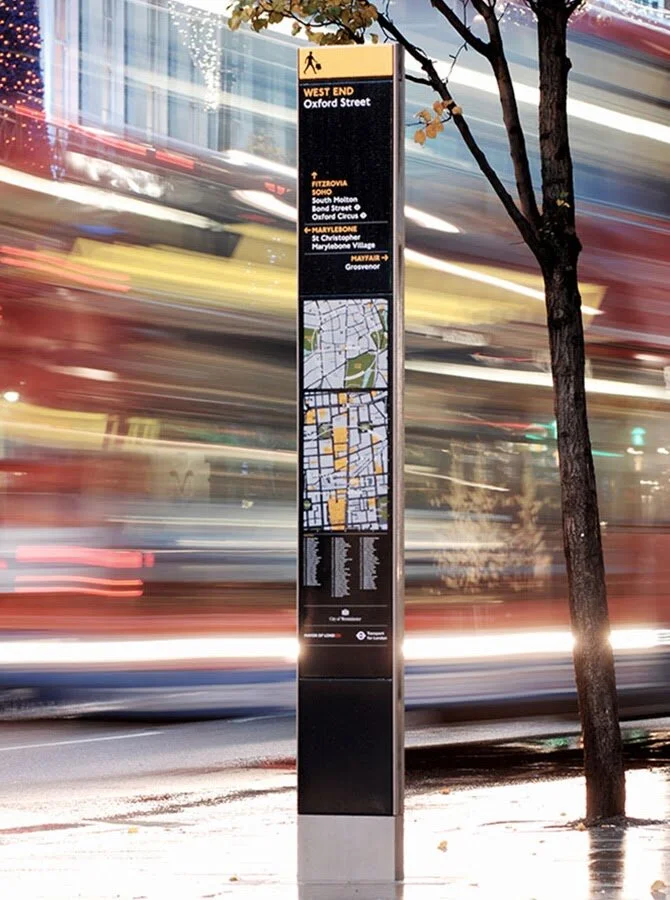Wayfinding Helps Cities - In More Ways Than You’d Think
By Eleonore Evans, Government Relations Representative
Have you ever walked around a new city with your nose buried in your phone, listening to an automated voice telling you where to go? Or relied on measly street signage to find your way to the nearest public transit station, only to end up lost? Navigating new areas can be disorienting, confusing, and downright frustrating.
That’s why effective wayfinding systems are so important.
Not only do wayfinding systems help residents and visitors navigate city streets, they can also promote pedestrian activity, invigorate local businesses, and encourage the use of public transportation. This leads to benefits for the economy, the environment, and public health.
What is wayfinding?
Even if you haven’t heard the term “wayfinding” before, you’ve seen some examples in the real world. Wayfinding systems can be graphics, maps, directories, or simple visual cues. The National Association of City Transportation Officials notes some general rules of thumb for wayfinding systems.
Wayfinding systems should:
Encourage walking or the use of public transportation
Make pedestrians familiar and comfortable with the distance and direction they have to travel by bike or foot
Be located in city hubs like marketplaces, transit stations, plazas, squares, or parks helps ensure usage
Use universally understood symbols and cues for all graphics, images, and maps to make wayfinding inclusive for all users
Why implement wayfinding systems?
Wayfinding systems aren’t just convenient amenities - they’re also components of a more sustainable city. Walkability has become a secondary priority in cities after the invention of cars, but employing effective wayfinding signage could be a key to reclaiming the city primarily for pedestrian use.
In 2006, Transport for London (TfL) developed Legible London, a new system of wayfinding signage intended to direct pedestrians to their destination quickly and easily. With over 10,000 unique maps in the metro London area, the signs remain visually consistent, so users are familiar and can quickly turn to it for guidance. In follow-up assessments, TfL found:
Pedestrians reached their destination 16% quicker
23% of users reported being more confident wayfinders 65% less people found themselves lost
Pedestrian activity increased by 5% where Legible London signage was deployed
There’s no doubt that wayfinding systems are valuable to cities, citizens, and businesses alike.
Learn more about how Soofa Signs can act as a wayfinding tool in your community.


